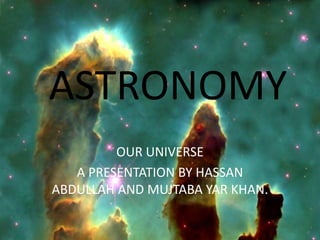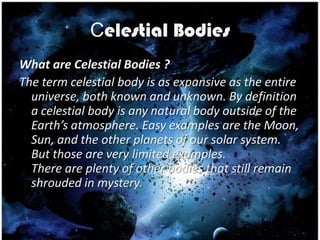The document is a presentation on astronomy, covering concepts such as celestial bodies, stars, planets, and phenomena like black holes and quasars. It details the characteristics of various planets in the solar system, including their sizes, compositions, and unique features. Additionally, the document discusses the formation of stars and the lifecycle, leading to their potential transformation into black holes or neutron stars.
























